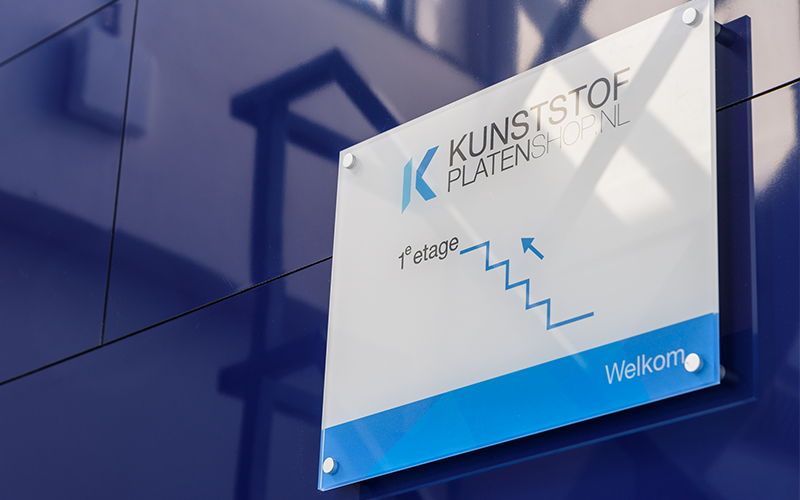
When you want to place a nameplate for your home or business, you have many different materials to choose from. But have you ever considered a nameplate made of acrylic? Acrylic is a plastic that looks a lot like glass, but has many advantages over traditional glass. For example, it is lighter, stronger and easier to work with than ordinary glass. On this page, we tell you everything you need to know about acrylic nameplates.
You may be wondering: why should I choose acrylic plastic instead of traditional glass? Good question! Here are a few reasons why:
Plastic, and especially acrylic is breakage resistant, which means your nameplate will last longer. It is also resistant to weathering, meaning it will not yellow or break due to temperature changes.
Thanks to its clarity and the possibility to get acrylic plastic in different colours, you can create a unique and eye-catching design.
In the table below, we consider the pros and cons of using acrylic for a nameplate compared to other commonly used materials:
| Material | Acrylic | Traditional glass | Wood | Metal |
|---|---|---|---|---|
| Durability | Very durable | Durable | Can rot/degrade | Can rust |
| Shatter resistance | High (will not splinter) | Low (can splinter) | Medium (may splinter) | Very high |
| Weather resistance | Very high | High | Low (treatment required) | High (treatment required) |
| UV protection | High (does not yellow) | Medium | Low | High |
| Maintenance | Low (easy to clean) | High (gentle cleaning) | High (handling & cleaning) | Medium to High |
| Safety | High (no sharp edges) | Low (sharp edges when broken) | High (depends on finishing) | Medium (may have sharp edges) |
Making an acrylic nameplate is easier than you think, but there are a few things to consider.
Choice of material thickness
Depending on where you want to place your sign, you can choose either thicker or thinner sheets. For outdoor use, a thicker sheet is recommended. At Plasticsheetsshop, you will find acrylic sheets ranging from 2 mm to 30 mm thick. There is a suitable thickness for everyone!
Design tips
Your nameplate should be representative of you or your company. To make your sign really stand out, here are two useful tips.
Use of colours
Choose colours that stand out, but stick to a maximum of two to three colours to keep the design clear. You can also search the internet for great colour combinations.
Fonts and sizes
Make sure your name or message is clearly legible, even from a distance.

We have prepared a step-by-step guide explaining how to make an acrylic nameplate.
A plastic nameplate requires minimal maintenance. Here are some tips to keep your sign looking like new:
Cleaning products
Use a soft cloth and mild detergent. Avoid abrasive materials or harsh chemicals, such as acetone, that can damage the surface.
Maintenance
Clean your board regularly to remove dirt and dust. This will preserve the clarity and legibility of your board.
Whether you want a nameplate for your home or business, an acrylic nameplate is a stylish and durable choice. With proper care and maintenance, your sign will last for years. And now that you know the benefits, why choose another material?